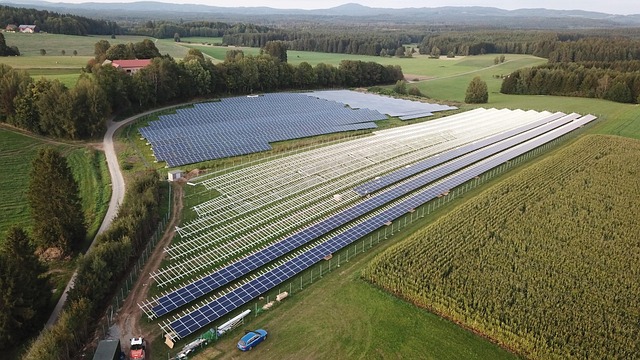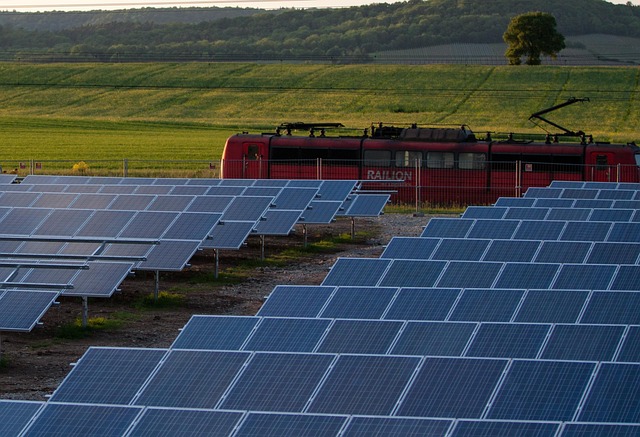Harnessing the Sun: The Future of Renewable Energy
The topic of renewable energy has taken center stage in global discussions surrounding climate change and sustainability. Among the various renewable energy sources, solar power stands out as one of the most promising and widely applicable options. As technology advances, the ability to harness the sun’s energy is not just a prospect for the future; it’s a current reality actively shaping our energy landscape. In this article, we will explore the potential of solar energy, its technological advancements, challenges, and its role in paving the way towards a more sustainable future.
The Basics of Solar Energy
Solar energy is generated by capturing sunlight and converting it into usable electricity or heat. This process can be accomplished through several methods, the most common of which is photovoltaic (PV) technology. PV panels, often referred to as solar panels, consist of solar cells that convert sunlight directly into electricity. Another method is solar thermal energy, which harnesses the sun’s heat to produce hot water or steam for heating applications or for generating electricity.
Technological Advances in Solar Energy
As the demand for renewable energy grows, so too does the innovation in solar technology. Recent advancements have significantly increased the efficiency of solar panels and made solar energy more accessible and cost-effective. Here are some noteworthy developments:
1. Improved Efficiency: Traditional silicon-based solar panels have seen a marked improvement in their efficiency over the past decade. New materials, such as perovskite, are being explored to create solar cells that convert more sunlight into electricity. In some lab settings, efficiencies have exceeded 25%, a significant leap from the industry average of around 15 to 20% for conventional panels.
2. Bifacial Solar Panels: These modern panels can capture sunlight from both sides, further enhancing their efficiency. By reflecting sunlight off surfaces below the panels, bifacial designs are capable of producing additional energy, particularly in areas with high albedo, such as snowy or sandy landscapes.
3. Solar Tracking Systems: Solar panels fixed in place usually yield lower energy compared to those that can track the movement of the sun across the sky. Tracking systems enable panels to pivot and follow solar radiation throughout the day, significantly increasing their overall energy output by as much as 25-35%.
Economic Benefits of Solar Energy
Investing in solar energy can lead to substantial economic benefits at both individual and societal levels. The transition to solar power comes with potential cost savings on energy bills and creates jobs in the renewable energy sector. Here are some key economic advantages:
Job Creation: The solar industry is experiencing rapid growth and is becoming a significant contributor to job creation. From manufacturing and installation to maintenance and research, thousands of new jobs are being created each year, providing opportunities for a diverse workforce.
Energy Independence: By investing in solar energy, countries can reduce their dependence on imported fossil fuels. This shift helps stabilize local economies and creates resilience against fluctuating global oil prices. Enhancing energy independence not only bolsters national security but fosters local economic growth.
Declining Costs: The cost of solar energy has decreased dramatically in the last decade, making it one of the most affordable sources of electricity available. The cost of photovoltaic installations has declined by a staggering 80% since 2010. This trend is expected to continue as technology improves and economies of scale in production are realized.
Challenges Facing Solar Energy
While the outlook for solar energy is promising, several challenges need addressing to fully realize its potential. Understanding these obstacles is crucial for stakeholders aiming to promote the use of solar technology effectively.
Intermittency: Solar energy generation is constrained by the availability of sunlight, making it less reliable than some other energy sources. Nighttime and cloudy weather can significantly reduce output, leading to concerns about energy consistency.
Energy Storage: To mitigate the effects of intermittency, advancements in energy storage solutions, such as batteries, are crucial. Although the market for energy storage has expanded, current technologies can still be expensive and limited in capacity.
Space Limitations: Solar panels require significant space for installation, especially in large-scale projects. In densely populated urban areas, finding appropriate land can be difficult. Innovative solutions like rooftop solar installations and solar farms utilizing underused spaces are being developed to meet these challenges.
The Role of Policy in Solar Energy Development
Government policies play a pivotal role in the growth of solar energy. Supportive legislative frameworks can accelerate the adoption of solar technology and incentivize investments. Here are some key areas where policy can influence the development of solar energy:
Incentives and Subsidies: Financial incentives, such as tax credits and rebates for solar installations, can significantly lower the upfront costs for consumers and businesses. Such policies encourage more widespread adoption of solar technologies.
Renewable Portfolio Standards (RPS): Many countries and regions have implemented RPS that require utilities to obtain a certain percentage of their energy from renewable sources, including solar. These mandates create market demand for solar projects and contribute to the overall growth of the industry.
Research and Development Funding: Investing in research initiatives can catalyze innovations in solar technology, improve efficiency, and reduce costs. Government funding for R&D plays a crucial role in overcoming technical barriers and accelerating the transition to solar energy.
The Global Impact of Solar Energy
As nations worldwide continue to grapple with climate change and its repercussions, solar energy presents an avenue for mitigating environmental impact. Transitioning to renewable energy sources like solar power is essential for achieving global sustainability goals:
Reduction of Greenhouse Gas Emissions: Solar energy is a clean power source that generates electricity without emitting greenhouse gases. By increasing the share of renewable energy in the energy mix, countries can significantly lower their carbon footprint.
Access to Electricity: Solar energy has the potential to address energy poverty, particularly in developing regions where access to electricity is limited. Decentralized solar solutions can provide reliable electricity to remote communities that lack traditional energy infrastructure.
Adaptation to Climate Change: As the effects of climate change become more pronounced, resilient energy systems will be vital. Solar energy can contribute to climate adaptation efforts by providing a stable energy supply that can withstand disruptions caused by extreme weather events.
The Future of Solar Energy
As we look ahead, the future of solar energy appears bright. A combination of technological advancements, policy support, and public awareness is likely to drive the proliferation of solar solutions. Here are some future trends to watch:
Integration with Smart Grids: The integration of solar energy into smart grid technologies will enhance energy management and optimize renewable energy usage. Smart grids facilitate real-time monitoring and distribution of electricity, allowing for more efficient use of solar power.
Emergence of Building-Integrated Photovoltaics (BIPV): BIPV involves integrating solar panels directly into building materials, such as windows and roofs. This innovation not only enhances the aesthetic appeal of structures but also maximizes energy generation without requiring additional space.
Global Collaboration: As the urgency to tackle climate issues intensifies, international collaboration aimed at sharing technology, knowledge, and resources will be pivotal. National governments, NGOs, and private sectors must work together to create a unified approach toward a sustainable energy future.
Conclusion
Solar energy stands at the forefront of the renewable energy revolution, offering a viable solution to some of the most pressing energy challenges of our time. The advancements in solar technology, coupled with supportive policies and growing public awareness, indicate a transformative shift toward cleaner energy sources. While challenges remain, the potential benefits of solar energy — including economic growth, environmental sustainability, and energy independence — are becoming increasingly clear. As we continue to harness the power of the sun, we can look forward to a future that powers our lives without compromising the health of our planet.



